Text
Residency notes by Katariina Angeria (FI)
“Arriving to Gesteateliet in Vadso — for the second time of my life — I was prepared to share not only the working but also the living together with Merja and Maija-Liisa. I had taken the skies with me and made sure there was a bike available in order to enjoy the nature and to find my privacy.
As we skied with Sonja on the fells of Golnes and icy snow was hitting our faces diagonally and at times we could not see much, we identified the conditions kvens might have had when they arrives to Ruija, North of Norway. They might have seen elves and sprites too, stony figures waving in the storm and showing them directions.
When we as a trio got dressed up in Finnish national dresses and stepped out into the undying scenery, we did experience the existence of the ancient womankind. Through play, listening and courageous throwing ourselves we started working as a trilimbed ameba. Putting together three different personalities and artistic views did require some compromising and practice of open communication. Happy with the result and aware of all the opportunities if more time was to be spent — this was a great period of exploration in art and humanity”.
0 notes
Photo
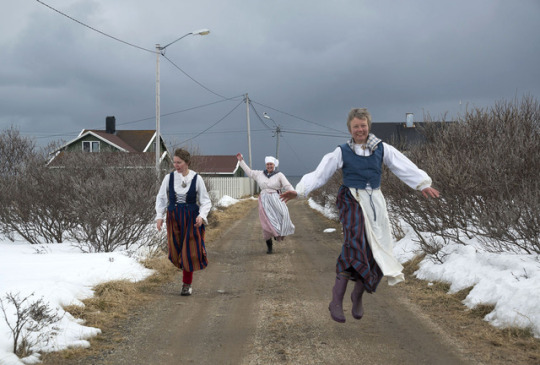
“After a long winter in the Varanger Peninsula we were suddenly in May. That’s why I could leave my daily work in the photoarchive for a month, in order to focus on the art project “Kven Connection”, with Merja and Katariina. I already knew Katariina, as we met ten years ago in Vadsø. Merja I had only met briefly at the Vadsø library. Each of us has in our own ways familiarised with the Kven topic. For over sixteen years I have been experiencing the landscape of Finnmark and its people. That´s the time I’ve been living here.
I was nervous first about kicking off our team work, but there was no need for that. We started immediately by storming ideas and trying our national costumes on, which were to play a key role in the project. I inherited my national costume five years ago from my mother’s sister. Using the costume in this context gave me a certain power, in some way connected to women history. We were roaming the coasts of Varanger and the streets of the villages like Skallelv, Vestre Jakobselv, Golnes, and Vardø, to name some.
The photographs were born fast. We all had our own places and voices in forming these works. A regular working day lasted from nine to four, because I had to leave everyday life aside. My daughter had to be taken to and from kindergarden. Regularity brought power to the teamwork. Sometimes we relaxed and undertook some activities, like the memorable trip into the bird island Hornøya near Vardø. We also had to try to make the best off a chilly and wintery May, during which I went skiing in the mountain with Katariina. A couple of times the three of us practiced yoga upstairs in the residence...
Summer has already arrived and our paths separated. I really feel that in one month we succeeded to dig something new out of the Kven theme, by artistic means, in an equal co-operation”.
— by Sonja Siltala (NO)
0 notes
Photo

“The Arctic Sea was turquoise and the mountains surrounding it were violets when we arrived with Katariina to Varanger fjord on the evening on the 1st of May. The scenery was as incredible as the month in the residency – the period was inspiring, active, but relaxed and pretty productive. For the first time I was making same artwork together with two other art field professionals. Pretty soon we found our own way to approach the theme and to work as a team. The strategy was to hang around dressed in Finnish national dresses, to meet people spontaneously and to make photos whenever we saw something interesting or just felt like that.
For me the month in Vadsø was also an opportunity to have a break from my daily hectic life. I had time to wander around, to read books and to write my own things. In addition, it was also essential to have a break just to be and to think. I am writing this text on my last evening in the residency. Tomorrow morning we are heading back home with new thoughts, ideas and inspirations. I am a little bit sad to leave all these wonderful people, experiences and Arctic energy, but at the same time more than ready for new adventures. I am feeling this is a start for something, which is still waiting to appear for a while.”
– by Merja Briñón (FI)
1 note
·
View note
Text
Notes by Sanna Korteniemi about the residency time in Vadsø, March 2017
Let's make some art about Kvens! Or... wait, it's not so easy. In which kind of context do we work within our project called “Kven Connection”? The general question is: How to make an art about others?
First idea: Kvens are Finnish-speaking people living in the Finnmark area.
Second: something about Samuli Paulaharju. No, I haven't read Paulaharju's folkloristic tales, but I know his works, of course.
Third one: trips with family to Norway when I was a child.
Norway was the closest foreign country, a good place for holiday trips. I know that Sweden is closer to Rovaniemi. But in my opinion there is not such a big difference between Finland and Sweden.
As a child I’ve spent many summer holidays in Pello which is a municipality at the border of Finland and Sweden. There is the Torniojoki river on the border, called also "Väylä" (maybe “The Way” in English), and the river never divided but only connected people. Countries are different, but people are the same in many ways on the both sides of the river. I know that the Torniojoki river is familiar to many Kven people too. Many Kvens are from Torne Valley area, from both sides of the river. So I feel that there are some similarities between my background and the Kven history, language and culture. But is it enough? Could I say that I understand Kven people somehow? Is there any real connection between me and Kvens?
I started the project by reading books for academic artists like me reading is the most natural way to get any information — so, let's go to the library first! Let's read about history and politics, about conceptions and statistics. Don't read so much about Paulaharju — it's too subjective, idealistic and imaginative. Statistics are objective as they are based on facts! Or... are they?
I learned something new about some words. The Finnish word “Ruija”, used for the Finnmark area, could also mean “Northern Lights”, like the old Norwegian name Haalogaland (Haleugir = High flames), which is the name of the area including Nordland, Tromsø and Finnmark.
An other interesting point is the term “Terra Feminarum” that originates from the medieval chronicle of Adam of Bremen (1073-76). It's possible that the “Land of the Women” refers to the Kvenland — or not. Maybe this connection is based on a misunderstanding, because the words “Kven” and Swedish “kvinne” (a woman) are so similar. But maybe we could use a little imagination.
In the Finnish-Karelian mythology The North (Pohjola) was a matriarchal country led by the Matron of the North (Pohjolan emäntä). It's interesting that life in some Russian Karelian villages is still based on a matriarchal system! Is there some connection between Karelia and Kvenland?
If you have heard anything about Kalevala (the collection of stories from Karelian mythology collected and edited by Elias Lönnrot) you know the story about Sampo. The Matron of the North asked the smith called Ilmarinen to make “Sampo” — an object that could create happiness and richness. These elements: North, looking for happiness and better possibilities for life — isn't there a very strong connection to the history of the Kvens and the Finnmark area, the coasts of the Arctic Sea? Is the Kvenland the same land that the one of Sampo — the fantastic object embodying the hope for happiness, richness and a better life?
Unfortunately, Sampo was broken and hidden, and nobody knows where it is now. Maybe deep in the Arctic Sea? Maybe now, when the climate is changing and the Iced Sea will be given up to the transnational corporations, it's time to search for Sampo again? But how does that end? Is Sampo actually the reason for misfortune and restlessness? Such interesting questions — and such ones for our time!
1.3.2017. Wednesday
Yesterday I left from Rovaniemi to Inari by bus. Today I continued the journey by a mail car to Utsjoki to Teno Researcher Center. After watching Iivo Niskanen's gold skiing I continued the trip with a researcher who works in Vadsø. The evening was turning dark when we arrived to Vadsø.
2.3. Thursday
I visited in the library and got a card, so that I can borrow books.
Some notes:
— is Kven language especially a spoken language? There are not so many books in Kven language.
— What position does the Finnish language has in relation to the Kven language?
— Meanings of the term “Kven”.
— Attitudes: a local language — thought to be “poorer” than the Finnish language?
— Comparing the situation of the Kven language with the background of my own language history. The hidden (in the case of my family — my father is a teacher, as well as his father, and I think that the education is the reason why their spoken language turned closer to the standard written language) dialect of Torne Valley Finnish which is very close to Meänkieli (an official minority language in Sweden). The dialect in Torne Valley is still somehow the language of my heart — but to me it is more familiar from literature, rather as a spoken language!
3.3. Friday
In the Varanger museum
Notes:
— The building used to be the house of NRK. Monumental and pompous, the symbol of the power of the State of Norway. The symbol of Norwegianisation?
— Local architecture versus national architecture like the NRK building, the church and so on.
— Is the Immigrant Monument also the symbol of the power of the State?
7.3. Tuesday
I found a book called “Solgunni muistelee — Solgunn forteller” (Memories of Solgunn) There was a poem “Oma kieli”, The language of one's own.
“Taivas oon suuri
Tätđet loistavat kirkkaasti maailman lapsille
Maailman lapset puhhuuvat ommaa kieltä
---
Pikku Vili on kainulainen
ja hän puhhuu ommaa kieltä
Nyt hän ei tartte pölätä
ette saapi sölkhään
ko hän puhhuu ommaa kieltä”
I tried to translate it somehow:
|The sky is so wide
Stars twinkle brightly
to the children of the World
Children of the World speak the language of their own
---
The little Vili is a Kven
and he speaks the language of his own
Now he doesn't need to worry
to get battered
when he speaks the language of his own”.
How true that is! I have heard many of this kind of stories also in Finnish Lapland. Too many painful stories (not only mentally, but also physically painful).
8.3. Wednesday
I drew a landscape from the window of the residency. On the picture I wrote the forecast information from yr.no, in Kven language — I understood it better than Norwegian or North Sami.
— Measurement, monitoring, statistics.
— Is it possible to measure a landscape?
— Is it possible to measure experiences and emotions?
— Is it possible to measure the meanings of the landscape?
Does the statistics tell the truth about the reality? Are the statistics objective?
Lassi Saressalo explains in his study how the State of Norway gathered statistics about ethnic groups of Finnmark area. First there were three different options: are you Norwegian, Sami or Kven? But then they simply dropped out the question about the Kven background. During many decades there were only two possible ethnic identities: Norwegian and Sami. This is how the bureaucratic power and violence work!
In Western countries we still believe that we are innocent, that we didn’t treat our minorities the same way than in totalitarian countries. The murder of culture happens somewhere else... we believe so strongly that we are on side of truth, there is a lack of words to describe the differences between the official and the “real” truth. For example, in Russian language this kind of separation is created by two words: the word “pravda” means official or common truth (based not only on facts but also beliefs and opinions), whereas the word “istina” means the “real” truth based on real facts.
My work deals with the difference between these terms, two kinds of truths:
— the difference between official and actual reality;
— the difference between the national and the local points of view;
— the difference between knowledge and experience.
But how I could say (or show) anything true? Could I find the right answers? No, I couldn't claim that I understand or know anything about the reality of Kven / Norwegian Finnish people.
But maybe I could ask something? Could I make some pictures about these questions?
1 note
·
View note
Text
Reflections on The Kven Identity: Strong Roots and History of Denialism (by Meri Nikula)
As someone living in Kautokeino (Norway) where the Sami people have such a strong hold, I have felt a special tenderness towards the Kvens, who have not come even close to the position of the Sami as a minority in Norway. It is understandable in some ways: the Sami do not have a ‘land of origin’ that would be different than where they live now, they are indigenous people, not immigrants. Kvens did come from Finland, originally. Why should the be a minority, then?
They have this curious situation where, after several generations of not being Finnish anymore, they are also not ‘purely’ Norwegian either - despite the efforts to rid people of this inheritance and the discrimination that lead many to disown their roots. Who are they, then? Should it even matter? As a matter of identity, the answer is yes. Yes, it does matter. They have unique history, unique roots and through generations, have had a unique culture and though coming to the point of being nearly extinct they still are a valid minority - without ever having been fully recognised as such.
Also, where as the Sami have made a big deal out of their causes and won the attention and even admiration for having a rich and living cultural heritage, Kven have stayed silent… until the point of their language and culture having been nearly forgotten. And this, again, should this even matter? The answer being, again, the same as well: as a matter of identity, it does matter. Having roots and history you could be proud of, a sense of knowing yourself and having an identity that feels true to you, this still does matter. And for not being respected for who you are can still cause pain for those who feel inferior for for their cultural identity and language or those who have lost the language.
The same way as many Sami are strictly offended by the use of the word ‘Lapp’, Kven was in fact a similar word for the Norwegian Finns. It had been used in an offending way and many still do not like the word. However, in the greater scheme of things, no other word has replaced Kven so want it or not, Kven would they be! And what ever historic pain might be infused in the word, will have to be melted away.
I have wanted to take a positive spin on the word Kven and wanting to stand for the vitality of their culture and identity. I am a modern-day Kven in the sense that I too moved to Norway, from the Torne Valley. The Kven language sounds just like home to me, very similar with the Meän Kieli spoken in both Swedish and Finnish side of Torne Valley and also the special Finnish dialect that is spoken by my godmother and other’s I know closely. I am not Norwegian though. And my roots are not here. So I can only reach into the inner landscape of the Kvens through my own experience of how it has been for me, to move to North of Norway - and through my research on their past and present, specifically through the musical traces I could find and create new ones based on my own intuitive expression.
Meri Nikula
www.merinikula.com
0 notes
Text
New Kven Traditional Music - Residency in November 2016 (by Meri Nikula)
During my residency in Vadsø my goal was to start creating ‘New Kven Traditional Music’ through finding out about what kind of music has been important to the Kvens and through researching the language itself and the sounds and rhythms that would be unique to it.
I was listening trough the music archives in the Ruija Kven Museum and got really into the laestadian music, the psalms, that were very important in the Kven Culture. They were sung in Finnish, which gave the language a boost and kept a heartfelt connection among the people, holding on strongly to their roots. I worked with the melodic material of a laestadian psalm as a base for some vocal improvisations. I wanted to leave out the words, as them being very religious, I thought it would actually limit the potential experience of the listener who might not be as strict believers. I wanted to ‘release’ these beautiful melodies from their religious baggage so they could be appreciated by more people. I thought in this way, I could open something of the ‘laestadian soul’, appreciating the spirituality that would come across by the pure melodies. Also, I learned that no instruments were used for the laestadian psalms, they were simply being sung without accompaniment. As I too work with pure voice, this was an interesting similarity for me to find.
My second approach in creating the ‘New Kven Traditional Music’ was through working on the words themselves (non-religious), creating new music based on words that would be characteristically ‘Kven’, both from a more rhythmical perspective as well as from the sense of melody with the words. This became another tool I will be using in further research and creation. For this way of working, I would be more playful. For my first such piece I simply paged through the first book in Kven language I got in my hands (‘Kuosuvaaran takana’ by Alf Nilssen-Børskog) and chose words that stood out to me and that I somehow enjoyed. In this way I created a song called ‘Tulthiin, Nähthiin, Jääthiin’ (We came, we saw, we stayed) for which I composed the melody - it just came very naturally as I was tasting the words.
I performed twice, first in the made-up cowshed of the 'Varanger house’ exhibition, during the opening evening, at the Ruija Kven Museum.
The second performance I had at Vårbrudd, a central stage and a meeting place in Vadsø, during the cultural days, after the announcing of the culture prize winner for 2016.
With Georgia Munnik, my co-artist in residence, we also traveled to Vardø (checking out the witch monument by Louise Bourgeoise) and all the way to Børselv to meet Hilde Skanke and Anna-Kaisa Räisänen at the Kven Institut. They are a wonderful resource, especially if your work is connected to the language itself in any way! We also enjoyed their museum building, an old house where we could see traces of the past.
0 notes
Text
The ROOTCAMP
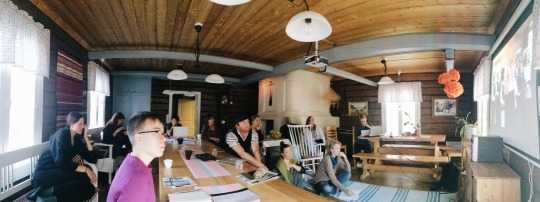
From September 15th to September 16th the first meeting of the participants and organisers of the KVEN CONNECTION took place in Rovaniemi, Finland. The "Rootcamp" offered an informal platform for artists' presentations, exchange of project ideas, curatorial feedback and preliminary planing of individual residencies.
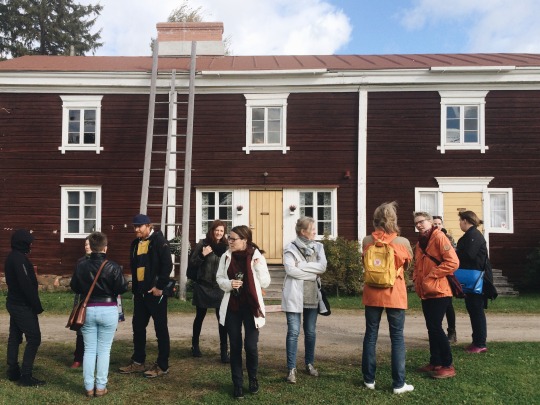
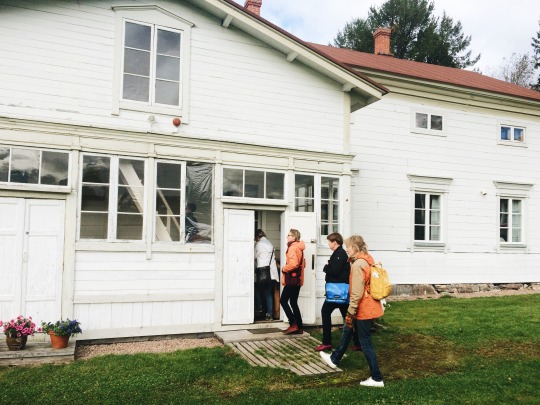
Furthermore, the participants of the "camp" could take forward their exploration of the kven culture during special visits to the Museum of local history and the Regional Museum of Lapland.
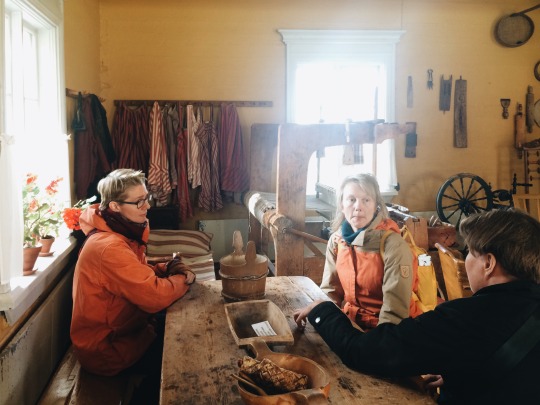

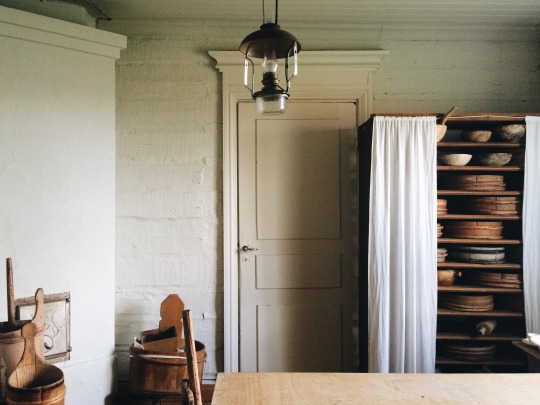
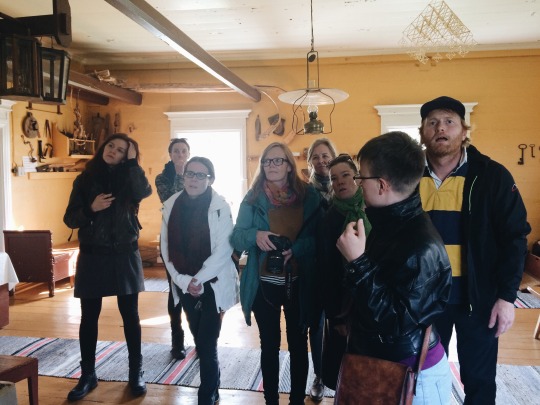
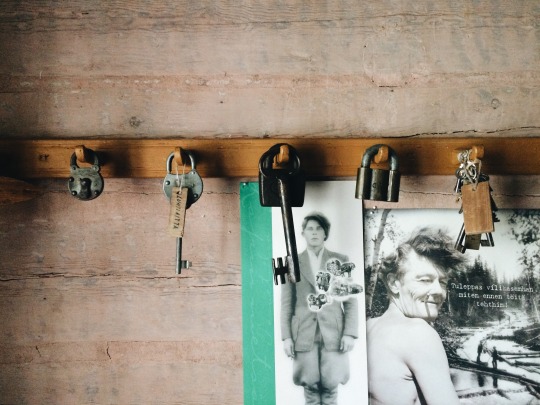
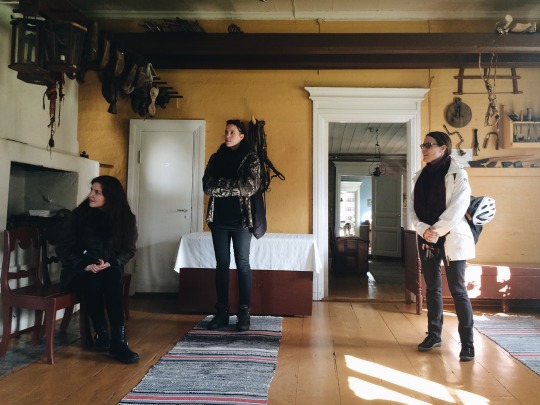
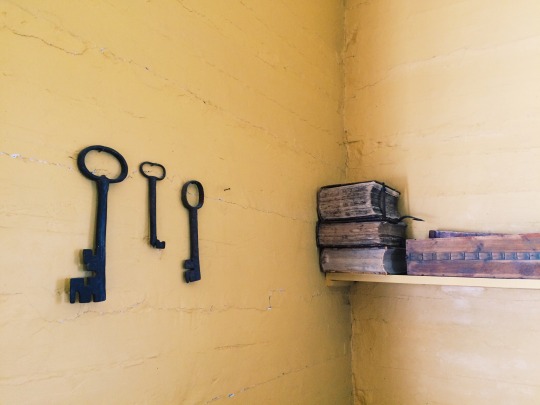


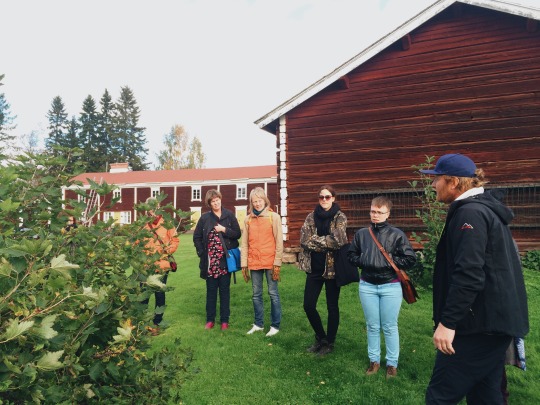
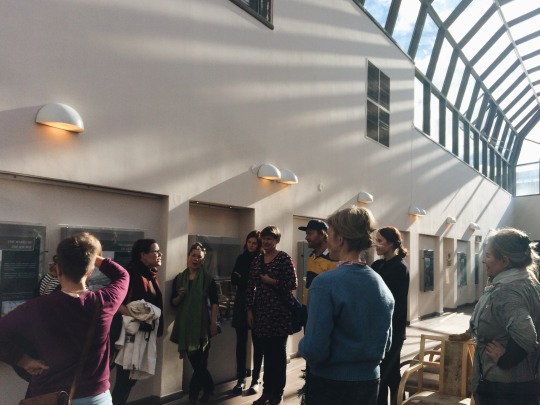

0 notes
Text
List of artists announced
The team of the KVEN CONNECTION project is glad to announce the list of artists selected to participate in the project:
Maija Liisa Björklund (NO)
Asle Lauvland Pettersen (NO)
Pirjo Nykänen (FI)
Marsil Andelov Al-Mahamid (NO)
Meri Nikola (FI)
Sanna Korteniemi (FI)
Merja Briñón (FI)
Sonja Siltala (NO)
Katariina Angurria (FI)
Georgia Munnik (NO)
0 notes
Photo
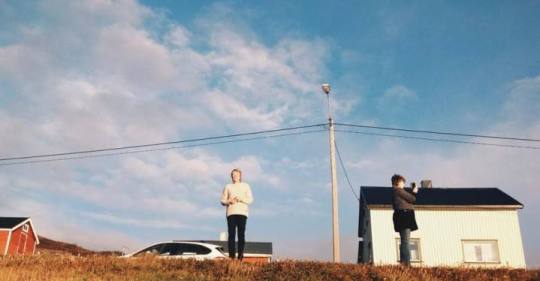
ARTIST CALL: KVEN CONNECTION
Kven Connection is thematic artist mobility/residency project. It promotes artists’ working possibilities, conditions and mobility between Finnish Lapland and Finnmark province in Norway.
Kven Connection explores modes of intercultural dialogue in the era of globalization and investigates the Kven tradition in the context of contemporary arts, transnational identities and cultural heritage. The Kvens are defined as Finnish-speaking people who immigrated to northern Troms and Finnmark from The North of Sweden, Finland and Russia mostly during the 18th and 19th centuries up till the 2nd World War. The Kvens are a national minority group and in 2005 the Kven language was recognized as a minority language in Norway.
General information and curatorial concept
Application procedure and conditions
Suggested readings and information about Kven culture
0 notes